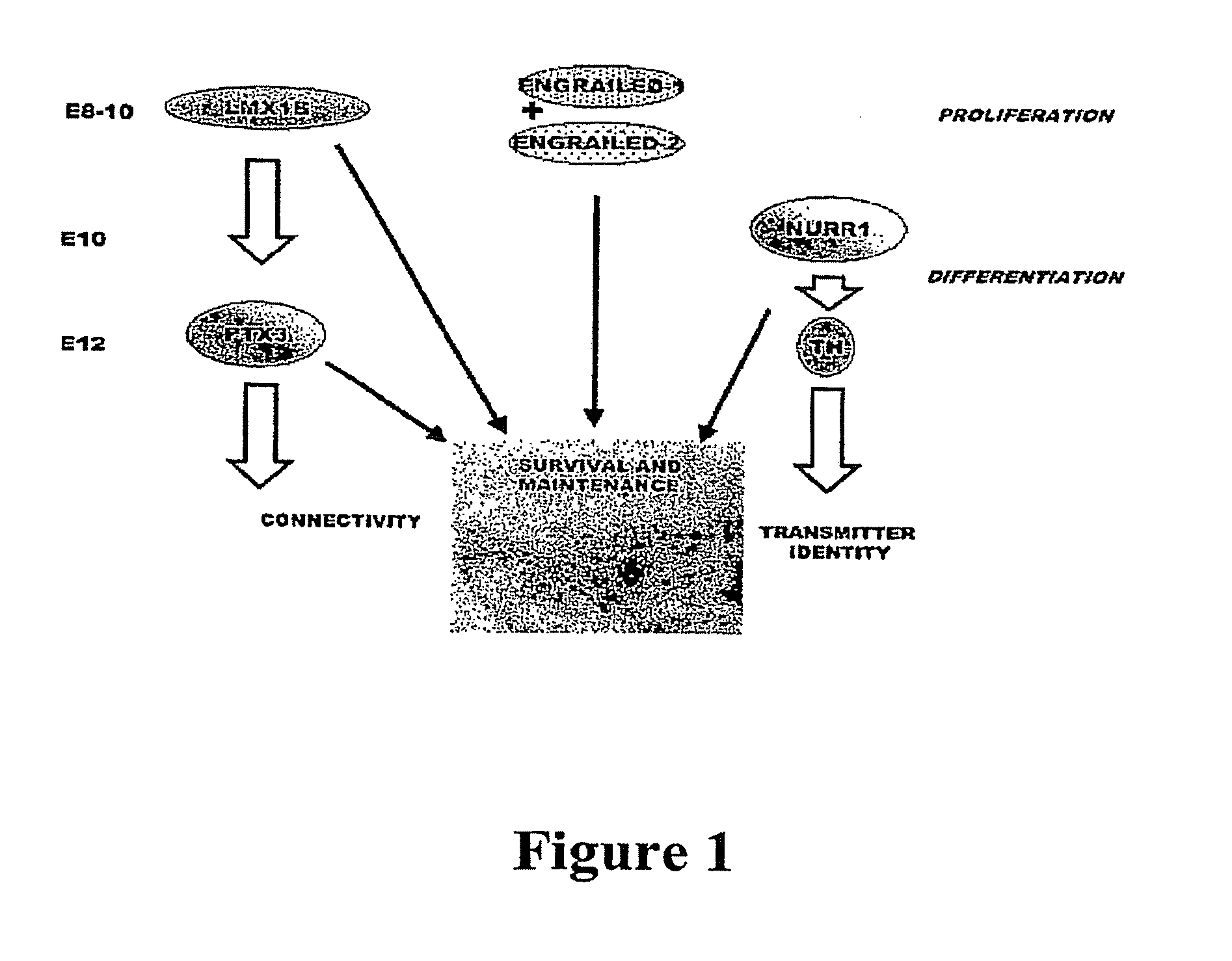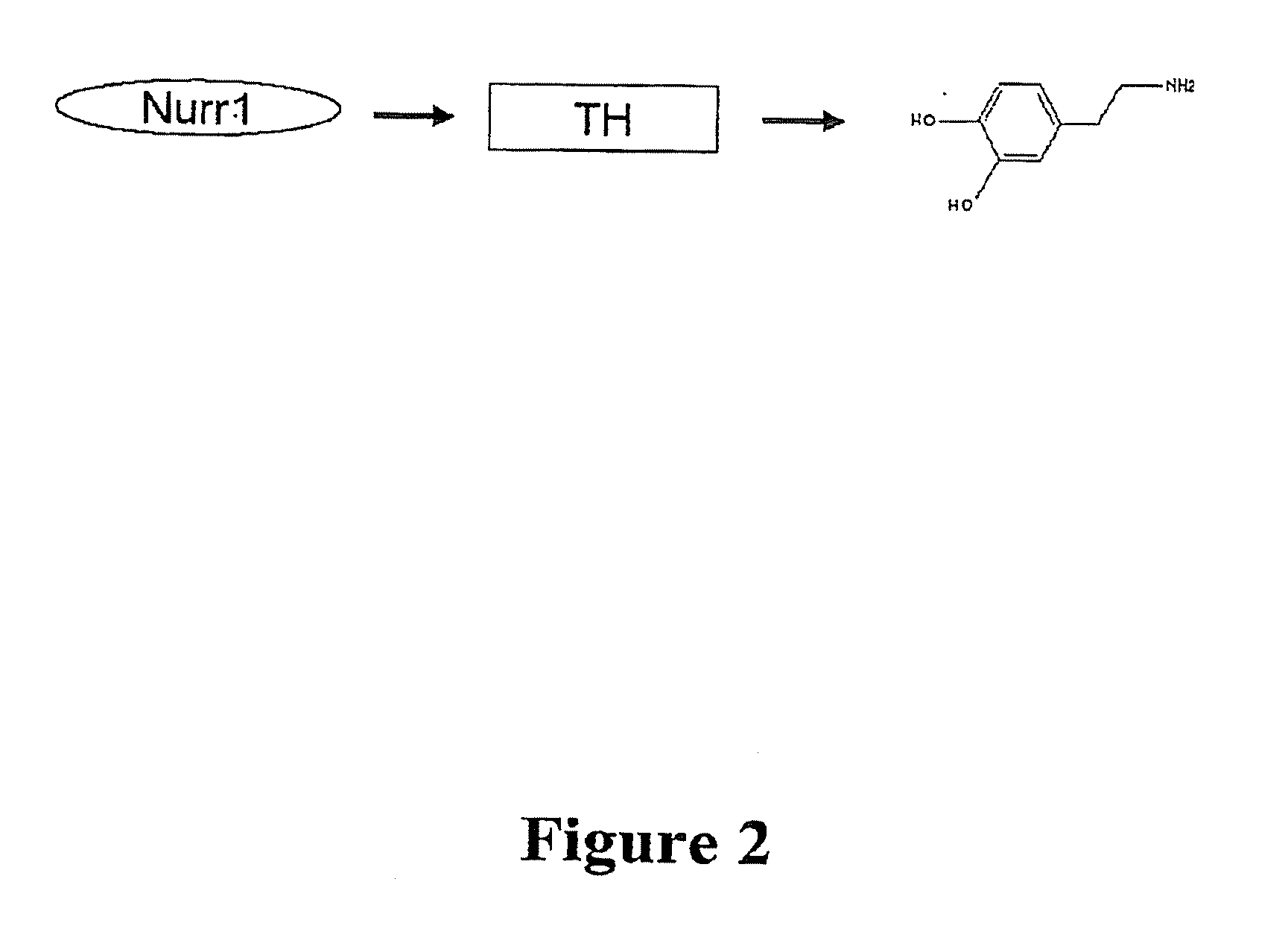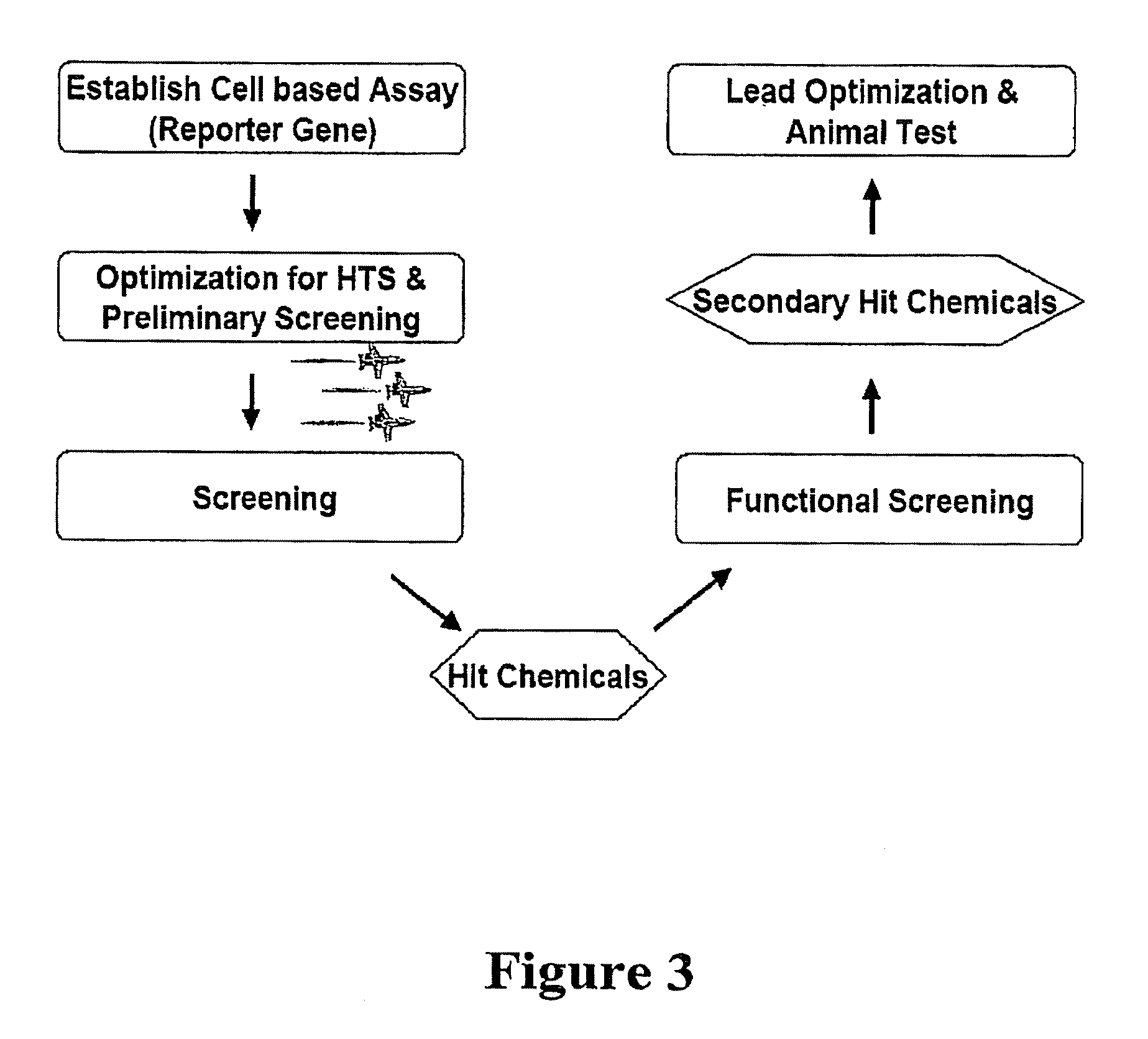Methods and compositions for the treatment of parkinson's disease
a technology for parkinson's disease and compositions, applied in the field of compositions for the treatment of parkinson's disease, can solve the problems of patients with impaired ability to direct and control their movements, trembling, rigidity, etc., and achieve the effects of reducing symptoms, slowing voluntary movement, and reducing rigidity
- Summary
- Abstract
- Description
- Claims
- Application Information
AI Technical Summary
Benefits of technology
Problems solved by technology
Method used
Image
Examples
example 1
[0094]A cell-based system exploiting Nurr1's activation of TH was created in order to develop an assay for identification of Nurr1-activating compounds. SK-N-BE(2)C (TH expressing) cells were used as a host cell line, demonstrating the clear response of Nurr1 effector to reporter plasmid in transfection. In addition, a transient transfection was selected, rather than using stable cell-line transfection, to favor the maximum responsiveness of compounds to the reporter gene in order to detect low-affinity hit chemicals in the first screening. Another parameter considered was the selection of short-sized natural TH promoters with all essential NBRE (Nurr1-binding)-like motifs rather than one specific kind of NBRE-motif, based on the assumption that the natural promoter generates closer biological screening condition than artificially copied promoter and the false positive chemicals due to the interaction of other unrelated transcription factors can be easil...
example 2
Relative Activity Assay of 7-chloro-4-aminoquinoline Compounds
[0099]Human neuroblastoma SK-N-BE(2)C cells were grown in Dulbecco's modified Eagle's medium supplemented with 10% fetal calf serum (Hyclone), 100 μg / mL streptomycin, and 100 units / mL penicillin and plated at 25,000 cells / well in the above media without antibiotic into 96-well plates one day prior to transfection. Each 96-well plate was transfected with a 1:1 molar ratio of effector plasmid containing the Nurr1 gene and reporter construct containing a reporter gene (FIGS. 8A-8B and 9A-9B). Transfections were carried out by the Lipofectamine method, and plasmids for transfection were prepared using Qiagen columns (Qiagen Co., Santa Clarita, Calif., USA). The total DNA amount used per 96-well plate was 0.2 μg, with 0.02 μg of pRSV-b-gal used as an internal control. On the day of transfection, 0.2 μg of DNA was diluted in 25 μl of Opti-MEM I reduced serum media, and 0.5 μl of Lipofectamine was diluted in 25 μl of Opti-MEM me...
example 3
Establishment of an ex vivo Functional System to Study Hit Candidates
[0101]Ex vivo functional study systems may be set up to select the best hit candidates for further drug lead development for treatment of Parkinson's disease. One possible functional study system of Nurr1 activators consists of detecting the increase of TH gene expression by real time-PCR, dopamine amount detection by HPLC, and immunostaining of TH protein in a dopaminergic cell line.
[0102]Quantification of TH mRNA by real time-PCR. The dopamine cell line MN9D provides a useful ex vivo model for studying the function of hit candidates. MN9D was generated by a somatic cell fusion of primary neurons from mouse Embryonic Day 14 rostral mesencephalic tegmentum and the neuroblastoma cell line N18TG2 (Choi et al., Brain Res., 552:67-76, 1991). MN9D cells synthesize catecholamines, have embryonic properties, express neuron-specific markers, and are sensitive to the DA cell toxin N-methyl-4-phenylpyridinium (MPP) (Kim et a...
PUM
| Property | Measurement | Unit |
|---|---|---|
| Fraction | aaaaa | aaaaa |
| Time | aaaaa | aaaaa |
| Composition | aaaaa | aaaaa |
Abstract
Description
Claims
Application Information
 Login to View More
Login to View More - R&D
- Intellectual Property
- Life Sciences
- Materials
- Tech Scout
- Unparalleled Data Quality
- Higher Quality Content
- 60% Fewer Hallucinations
Browse by: Latest US Patents, China's latest patents, Technical Efficacy Thesaurus, Application Domain, Technology Topic, Popular Technical Reports.
© 2025 PatSnap. All rights reserved.Legal|Privacy policy|Modern Slavery Act Transparency Statement|Sitemap|About US| Contact US: help@patsnap.com



